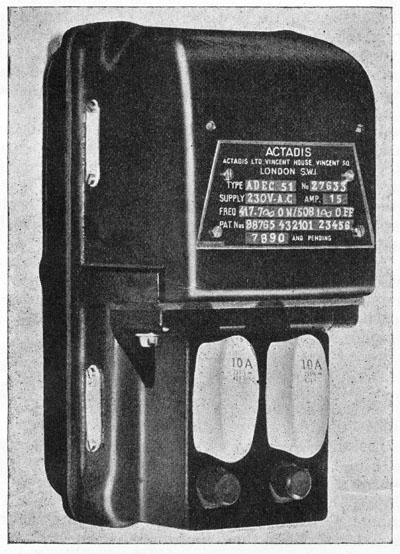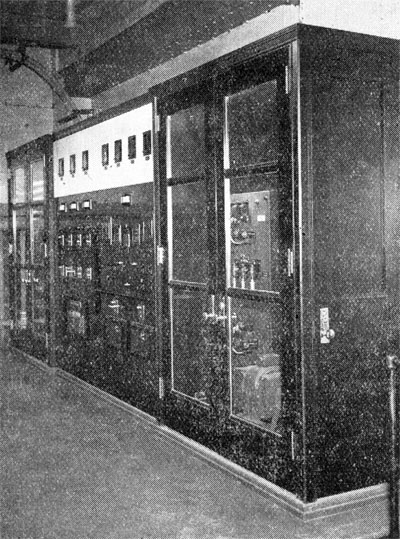|
measurement limited

|
Measurement Limited
Terminal House
Lower Belgrave Street
London SW1
|

Actadis is a portmanteau of Action At A Distance - Public Lighting #45, 1947
The system uses a series emission system. All other competitors used parallel emission systems.
The series system uses a powerful signal and more robust relay. - Public Lighting #45, 1947
Attempts were first made to employ a ripple emmision of this source about half a century ago.
The early attempts were small scale experiments. Their line of attack was to aim at a much more
powerful signal than was commonly used, on the principle tht with plenty of power in hand
there would be a greater margin of safety to allow for relay friction interference due to
harmonics and signal attenuation. It also enabled them to employ a more robust and durable
form of relay. But a powerful signal over the whole network could only be achieved by the
installation of a very high-powered alternator, often quite out of proportion to the size of the
undertaking. This difficulty was overcome by series emission in place of parallel emission which
enabled them to inject the full riple strength into one small section of the network at a time.
Successive injections into the remaining sections in turn thus provided a powerful signal
over the whole network involving only a reasonable size of alternator. In this way
Actadis (action at a distance) Ripple Control system was evolved and was first put into
practical use some 20 years ago and is today still in the forefront. - Public Lighting #45, 1947
An Actadis ripple transmitter is installed at the electricity generating station which, by the operation of a single
hand switch, transmits a high frequency "ripple" through the whole distribution network. In the lamp columns,
an Actadis relay is installed, which receive the ripple and switch the lamps on or off. Control can be effected
over very large areas.
The largest centralised control system in the world is installed in the City of Paris, now completely controlled
by Actadis. There are 50 other installations around the world. The first installation in Great Britain was
in Maidstone in 1937 and other authorities are following suit.
Advantages:
- Event of fog or war street lighting (ARP) can be instantaneously controlled.
- No maintenace whatever is required on the reception relays.
- Relay failure in service only average one per 100,000 operations.
- The system is infinitely extensible.
- The system does not require extra cables but provides every benefit associated with them.
Using ripple signals of different frequencies allows other equipment to be centrally activated. - APLE Conference Programme 1938
Standard equipment has 12 frequency signals. Are exhibiting a model with 4 frequency signals
turning two relays off and on. The purpose of the demonstration is to show the
very simple and positive action of the Actadis relay - mal-operations will not exceed 1
in 10,000. To achieve this reliability the series emission method has been adopted, making it possible to propagate a powerful signal
and to employ a correspondingly robust and simple relay of positive response.
Other advantages:
- Spill-over interference reduced to a minimum.
- Freedom from inadvertent operation by harmonics and surges.
- No limitation of network extensions.
- Emission may be sectionalised providing greater flexibility.
- Foolproof due to absence of complicated time coding.
To achieve these advantages more equipment is required, entailing higher first cost,
but it pays to buy the best. - APLE Conference Programme 1946

Contol Panel at Worcester
During the past 20 years over 50 installations of Actadis have been put into operation
with remarkable success; no serious failure has been encountered. Over the last 20 years, operational experience obtained
in over 50 networks gives an average reliabiltiy of 99.998%. - Public Lighting #45, 1947
The system is also suitable for the remote control of water heaters and any special circuits without laying any special
control cables. - APLE Conference Programme 1947
APLE Conference Programme Bournemouth 1938
APLE Conference Programme London 1946
APLE Conference Programme Southport 1947
- External Links:
- Grace's Guide
|



